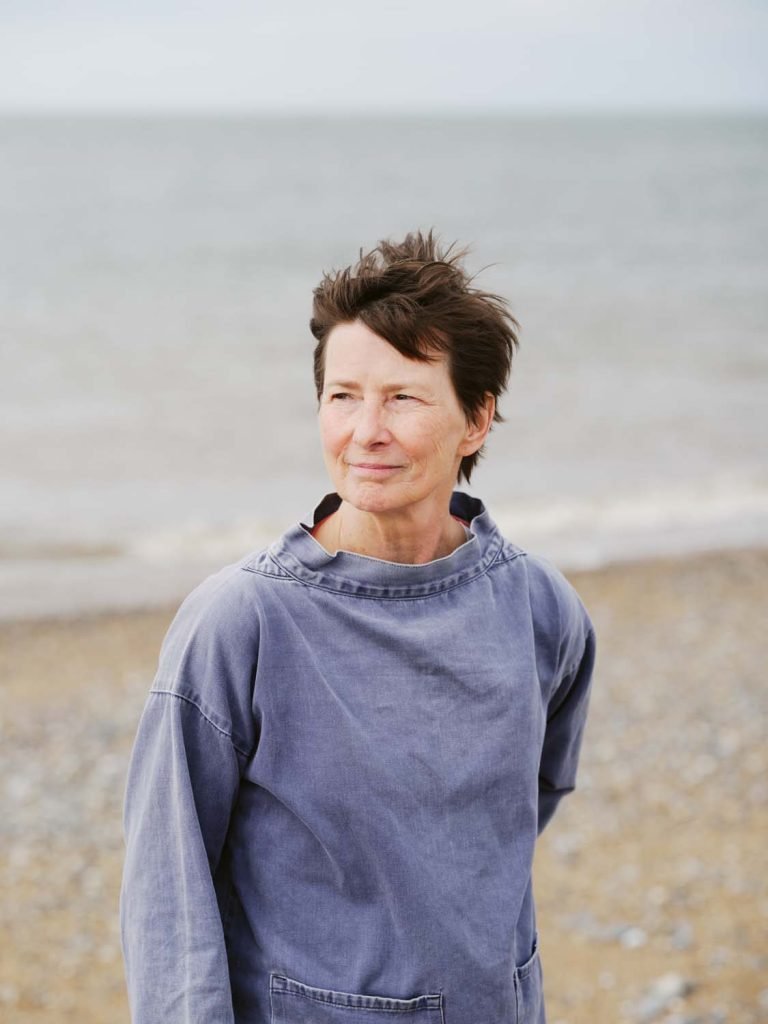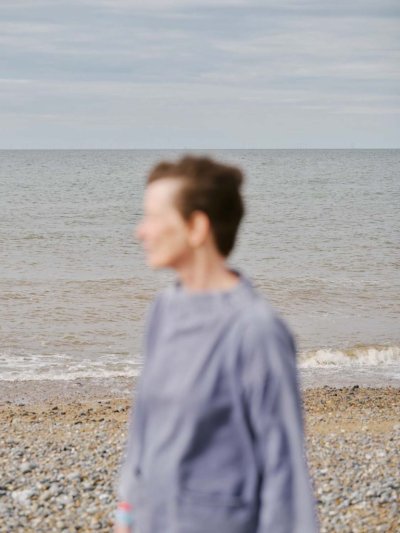Good memories: a life dedicated to the mind
Professor Carol Brayne has pioneered specialist research into dementia prevention and treatment, dedicating her life to a world where medicine meets statistics.

“I had rather a feral childhood,” says Carol Brayne, Professor of Public Health Medicine and Director of Cambridge Public Health. “The minute school was finished we’d be on the beach where we lived in north Norfolk, enjoying Mum’s bacon and egg pie. She was active in so many causes, so maybe it was natural that I’d be interested in medicine from a young age. One day I told her I’d like to be a nurse – she said: ‘Why not a doctor?’”
It’s clear the roots of what would become Brayne’s lifelong commitment to public health – a career that has seen her revolutionise our understanding of dementia and Alzheimer’s – lie in that childhood. Her interest in health inequalities springs from growing up in a one-parent family, at a time when there was still a stigma around that. “My mother took in foreign students to make ends meet,” Brayne says. “At school I’d begun reading New Scientist and became really concerned about the environment, and about the Cold War. The minute I got to medical school in London, I set up branches of Friends of the Earth and CND.”
Brayne’s branch of medicine didn’t exist in her university days – nor did a medical education resemble that experienced by today’s students. “I went to the Royal Free and we worked incredibly hard during what was an apprenticeship model during the clinical years. We were expected to know all our patients on the ward, inside and out. In retrospect it was a rigorous medical training founded on a deep interaction between us students and our patients that isn’t there in the same way now.” A series of junior doctor rotations in north London followed, one spent in an accident and emergency department “where we’d see so much that was distressing”, and a turn at the prestigious Whittington. Then came an unusual opportunity at the (now closed) Royal Northern Hospital that would lead Brayne to her first research opportunity – and spark a lifetime’s interest in neurology. “The police asked us to do it,” she explains. “They were always in and out of A&E with patients involved in violence, so we knew them well. They needed medical attendance at a local amateur boxing bout, so we designed a study alongside this to go ringside, take blood tests before and after a bout, and to count the blows to the head that each young boxer received.”

Brayne and her co-researcher (and soon-to-be husband) Dr Paul Calloway proved that creatine kinase BB, an amino acid-like compound only produced in the brain, leaked out proportionally to fist/head contact sustained by the boxers. “We got it into The Lancet as a letter,” Brayne recalls. “That was the early 1980s and you likely wouldn’t be able to do research like that now, but these sorts of studies are being done again using imaging, and that connection between trauma and brain function has been accepted. Medicine can be like that. As with pharmaceutical innovation, it takes a while for proof to filter through.”
Epidemiology and public health
By now, Brayne had a name for what she wanted to study: epidemiology, the study of how often diseases occur in different groups of people, and why. “It’s where medicine and the environment intersect,” she explains. And it is the epidemiology of dementia (a general term for the life-changing loss of memory, language, problem-solving and other cognitive abilities) and Alzheimer’s (a specific brain disease) that has formed her lifetime’s work.
Coming to Cambridge in 1985 on an early career research fellowship in epidemiology, Brayne found that she and many other researchers in related fields didn’t have a suitable academic ‘home’ within the University – so they set about creating one. “What was at first known as community medicine over time became public health – and was strongly multidisciplinary. I began to understand the gossamer work that is public health. It’s about being an advocate for all, understanding the balance of investment and activity for current and future populations, and identifying the evidence base that will enable us to do the best for them. Because public health isn’t in anyone’s pockets, it’s able to speak truth to politicians. Over the decades I’ve been at Cambridge, the transformations have been remarkable.”
Dementia was in many ways the perfect subject for epidemiological investigation. “It’s about all-around health across the life course,” Brayne says. “So many conditions can impact cognition. You need a sense of who someone is, what their health has been like, the community they live in, as well as knowing their final physical condition and the results of any physical testing.” Under the multidisciplinary umbrella of public health “there are so many opportunities for molecular chemists, geneticists, clinicians and policymakers to generate valuable results from population studies.”
Cognition, aging and dementia
Brayne went on to head one of the most ambitious population research programmes examining dementia – the Cognitive Function and Ageing Studies (CFAS). The initial research block began in 1989, and is the first of its kind to have been completed. Her work had started with a smaller, population-based study of women in the fens of East Anglia, examining dementia and normal ageing. Folding in a larger study based in Cambridge, the Cambridge City over-75s Cohort (CC75C), these studies piloted much that followed.
The research is the first of its kind to have been completed, helping establish the principle that dementia is a continuum and not a binary
CFAS started with a cohort of more than 18,000 participants, who were all aged over 65 when the study began. The Fenland and Cambridge City studies established an important principle, increasingly accepted now but not initially well understood: that dementia “is a continuum, not a binary which you either have or you don’t. It’s like that once you scratch the surface of so many conditions.” A comparison study, CFAS II, launched in 2009 and is ongoing.
CC75C pioneered the use of ‘brain banking’, in which brains were collected post mortem from study participants. “It was so innovative that initially the ethics committee didn’t know what to do with us,” Brayne admits. But thanks to a carefully negotiated process of consent-seeking, subject to frequent review, the team assembled a unique biological archive. “We studied these people so carefully in life – it was remarkable to be able to study them in death.”
More than that, it led to significant breakthroughs in our understanding of dementia and its relationship with Alzheimer’s, not all of which are fully recognised – yet. Although the media that surrounds us is filled with alarming stories about the prevalence and societal burden of an ageing population living with dementia, Brayne’s work has shown that “over the lifetime of our study there has been a clear reduction in age-for-age prevalence of dementia”.

That’s not all. The findings from CFAS, and work on those precious donated brains, has enabled Brayne and colleagues to challenge simplistic assumptions about how physiological change in the brain manifests as cognitive impairment. “We’ve shown that you cannot tell from a brain’s altered pathology whether that person had dementia,” she says, “while dementia can occur in people with none of the expected pathological changes to their brain.” It can be challenging pushing back on received truisms, such as the assertion that 60 per cent of dementia is caused by Alzheimer’s disease. “That gets into the ether and is repeated, but our work puts it much lower, nearer 20 per cent. And that’s hugely important, because it entirely alters how risk factors are viewed and what policymakers should be prioritising.”
Brayne now oversees a cohort of researchers studying everything from ‘age-friendly cities’ to the impact of ageing populations and dementia in low-to-medium income countries, such as Uganda (where a study sees scientists working alongside artists). After all these years, she finds herself “looping back to themes from the beginning of my career, those social and environmental passions I had as a student, and an appreciation of the significance of inequality.
“We know how to reduce the probability of developing dementia over the life course,” she says, “just as we know how to reduce the prevalence of obesity. Taking a preventative approach would also drive sustainability and reduce our dependence on biomedical science for early diagnosis, which is hugely expensive and damaging environmentally. You get far more bang for your buck with a public health approach. As I look at dementia studies today, I see what I was searching for at the beginning – so much potential for improving the health of populations.”
 CAM
CAM

